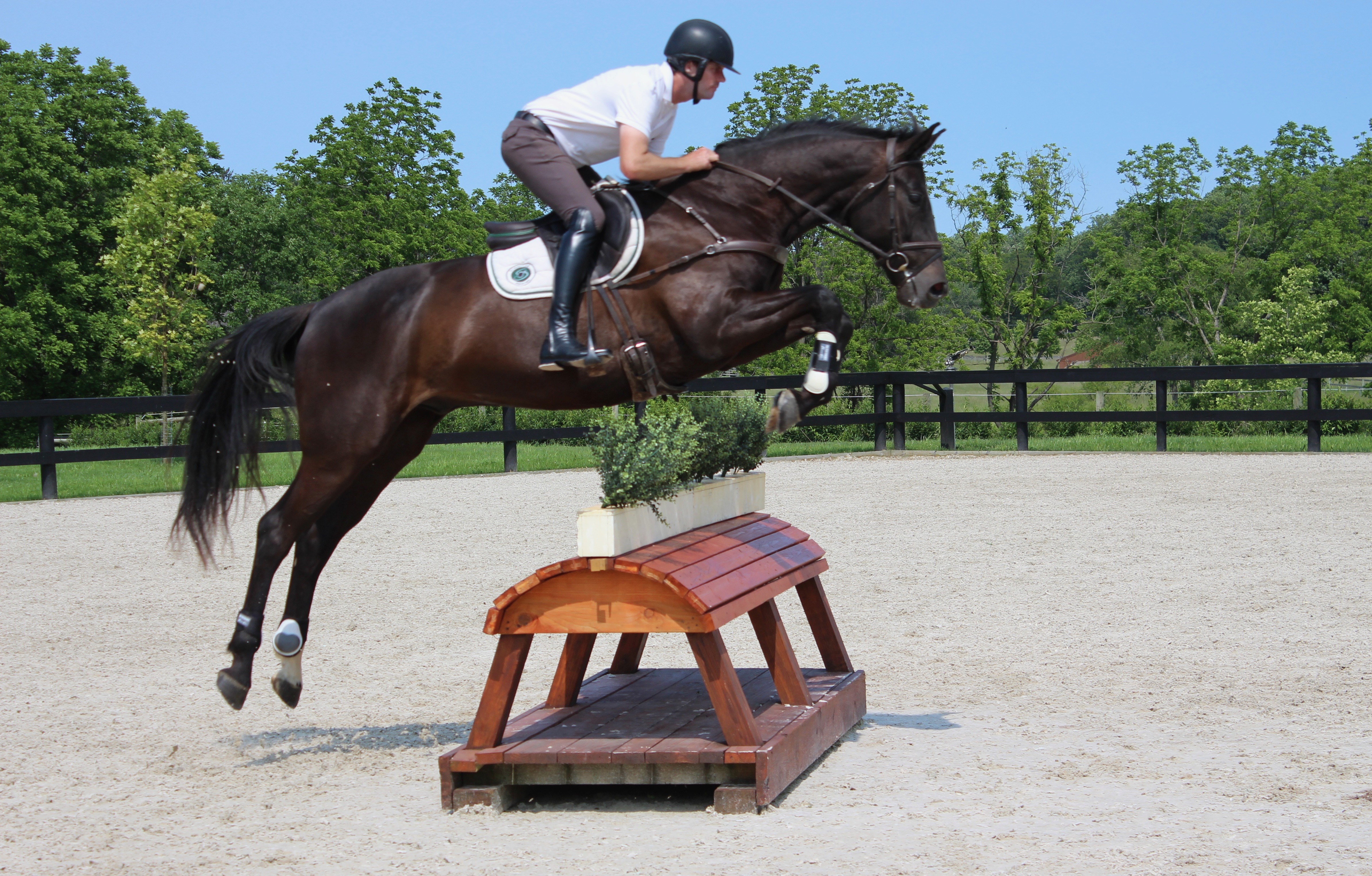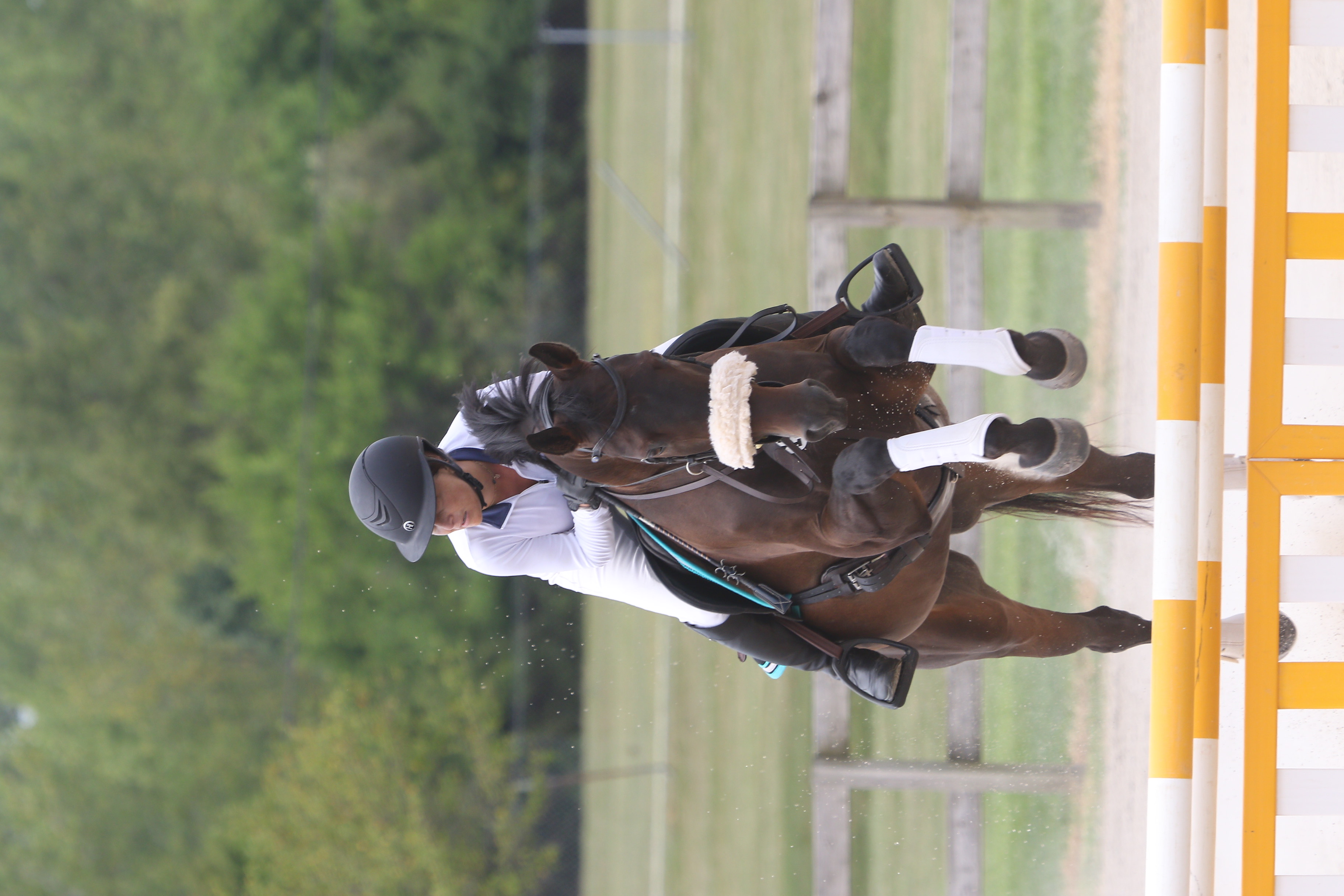Eventing grooms are, beyond a shadow of a doubt, some of the hardest-working people out there. For every six minute dressage test, or moment of glory over the final fence, there have been countless hours of conscientious care behind the scenes to ensure that the sport’s equine heroes are feeling and looking their absolute best. When the season wraps up and the horses’ shoes are pulled for a well-earned break, their #supergrooms finally get a chance to enjoy a much-needed rest (and an alarm that sounds later than 5 a.m. — what a concept!). But one top groom has chosen to spend her time off in a slightly different way this year.
Meet 24-year-old Jess Wilson, head girl and travelling groom for the legendary Sir Mark Todd. It’s no small task looking after Mark’s formidable string of top-level talent, and she’s on the road almost constantly throughout the season fulfilling her duties as the lynchpin of the team. But her love for horses extends well beyond the four-star competitors she tends to. She’s on a mission to improve the lives of working equids in some of the most underserved communities in the world — and this winter, she’s bringing us with her.
We’re so excited to have Jess on board the EN team, as she shares with us her experiences in Egypt and gives us a first-hand look at what Animal Care Egypt and Egypt Equine Aid are doing to help working horses, ponies and donkeys abroad. Fancy getting involved? Take a look at her JustGiving page, where she’s busy raising vital funds for both charities, and follow her on Instagram, too, for live updates from the field.
If you missed them, check out part one and part two of Jess’ blog.
I’ve been helping at Animal Care Egypt for a few days now, and wow! What can I say, other than what a fantastic place. The founder and manager, Kim Taylor, and co-manager, Ayman Butros, have been so helpful and generous in welcoming me to Luxor and ensuring I have everything I need for my stay (as well as being on hand for some great restaurant recommendations!)
The facility, in great contrast to the rest of Egypt, is kept immaculate and orderly by an awesome team of local staff, and there’s a large office and education area where local children come to learn about how to better look after their animals. There are two treatment rooms for small animals where Egyptian nationals can get their dogs and cats spayed or neutered for free, and then there’s the equine clinic, where I’ve been spending most of my time.

Immaculately maintained sand turnout paddocks allow the clinic’s residents the chance of a leg-stretch and a roll — commonplace pleasures for our own horses, but a luxury for a working horse in Egypt, who may live his whole life on concrete. Photo by Jess Wilson.
There are two parts to the equine clinic: the inpatients, who are admitted to stay in our hospital, and outpatients, who are treated and sent home with creams that their owners can treat the animals with at home. Alongside this is a large wash-off area, where all owners are asked to hose their horses off before seeking treatments. Here, they’re taught about the importance of keeping their horses cool, clean and hydrated.

ACE’s outpatient clinic and wash-off area, where horse-owners can provide some relief from the sweltering heat as well as essential hygiene for their animals. Photo by Jess Wilson.
I’m lucky to have been joined at ACE by three other volunteers – Dr Billy Fehin and nurse Sam Feighery from Rossdales veterinary clinic in Newmarket, and vet nurse Dianna Wilson. Not only is it a great experience to work alongside these guys, they’re also fun company, and I’ve found it much less stressful getting out and about outside of the centre, compared to my usual solo travel missions, where I’m a massive target for touts and hawkers!

Morning meetings cover every patient’s needs for the day — fortunately, the process is aided by an enormous treatment board, and the diligent team at ACE leave nothing to chance when it comes to offering these horses, ponies and donkeys the very best of care. Photo by Jess Wilson.
Our days start in the inpatients’ clinic, where we go around and check each patient, administer medications, and write notes about the condition of each horse or donkey, before heading back to the treatment room. There, we meet with ACE’s team of fantastic vets and go through a plan for what we need to do with each patient that day. Then I get to work cleaning, flushing, debriding wounds, changing dressings and bandages, helping give the horses fluids, and trying not to get in the way of the pros!
Once all the inpatients are looked after, I head to the outpatients are to lend a hand there. Horses are brought in for a number of reasons — from lameness to wounds to colic. There’s a bit of a language barrier between myself and the owners, but if the issue isn’t obvious, I can normally figure out the gist of the problem, using a bit of pointing and some hand gestures! Then, whilst waiting for one of the vets to be free, I can make some further investigations, checking vital signs, taking temperatures, assessing the cause of lamenesses, cleaning wounds, applying bandages, putting dressings on, and so on.

A deep abdominal wound, like the one seen here, isn’t an uncommon site at ACE. Photo by Jess Wilson.

After a thorough clean and flush, the wound can be dressed. The dressing is secured and then taped over with duct tape, which gives the wound the best chance of healing without infection. Photo by Jess Wilson.
We’ve had quite a few horses come in with really deep wounds and sores on their withers from ill-fitting tack. I find these cases quite hard to deal with, as really, the horses need a long period of time without any tack on the wound to allow it to heal, and for the area to be immobilised so it can close over. Sadly, that’s just not possible in most cases, as the owners need their horses to work every day, so the best we can do is clean the wound, apply a honey-soaked dressing, administer some painkillers, and give the owner a doughnut-shaped cushion, which relieves pressure on the area. The heartbreaking part for me is sending them back out the gate, back to their lives of pain and struggle, not knowing if the owners have listened to and understood what we’ve told them.

Sometimes, a little bit of ingenuity is required — here, a deep wound to a horse’s face is cleaned with a homemade saline flushing system. Though the wound itself was heartbreaking to witness, and the healing process will likely take a long time, this patient’s long-term outlook is bright, thanks to the dedication of the ACE team. Photo by Jess Wilson.
It’s obvious, up close, that these horses have a tough life — not only are they all very skinny, they have scars and open wounds on their knees and hips from lying down in the busy streets or on the concrete patches on which they live. They often have scars between their hind legs and on their rumps from a lifetime of being whipped, and deep gashes on the inside of their fetlocks from poorly-shod hooves, which cause them to brush as they’re hammered along the roads.

Knee injuries like these are common for working equines and, because of their proximity to the delicate structures of the joint, they need to be treated diligently. Photo by Jess Wilson.

This horse’s owner lives 1.5 hours away from the clinic, so he was able to be admitted as an inpatient for ongoing cleaning and treatment. Photo by Jess Wilson.
Often, when they come to the clinic, I don’t know where to start when cleaning them up and making them more comfortable. But thank god they have somewhere to come, where we can, and will, help them, and thank god their owners are seeking help and trying to do the right thing for their horses.
-

-
Working horses in Egypt must function in conditions entirely alien to equines — like this horse, who has to dodge fast-moving traffic on a busy road.
-

-
Often, the setting of the sun doesn’t herald the end of the working day, either — many horses work late into the night.
-

-
This donkey has finished a long day of work, but it’s not heading home to a comfortable stable — instead, he’ll spend the night tied up on this street, able only to lie down on the concrete.
It must be strange for a rural Egyptian man to arrive at the clinic to be greeted by a white girl in a t-shirt, but the local horse owners have been nothing but polite and extremely grateful towards me. What gives me hope and keeps me determined to carry on is that most of the owners I’ve met are genuinely concerned for their horses and they really want us to help them, so I’m starting to think that, if we continue to educate them we might start to see a change — albeit, a slow one — in the way horses are kept and used here.
Until next time!
Support Jess: Instagram|Egypt Equine Aid|Animal Care Egypt|JustGiving















































